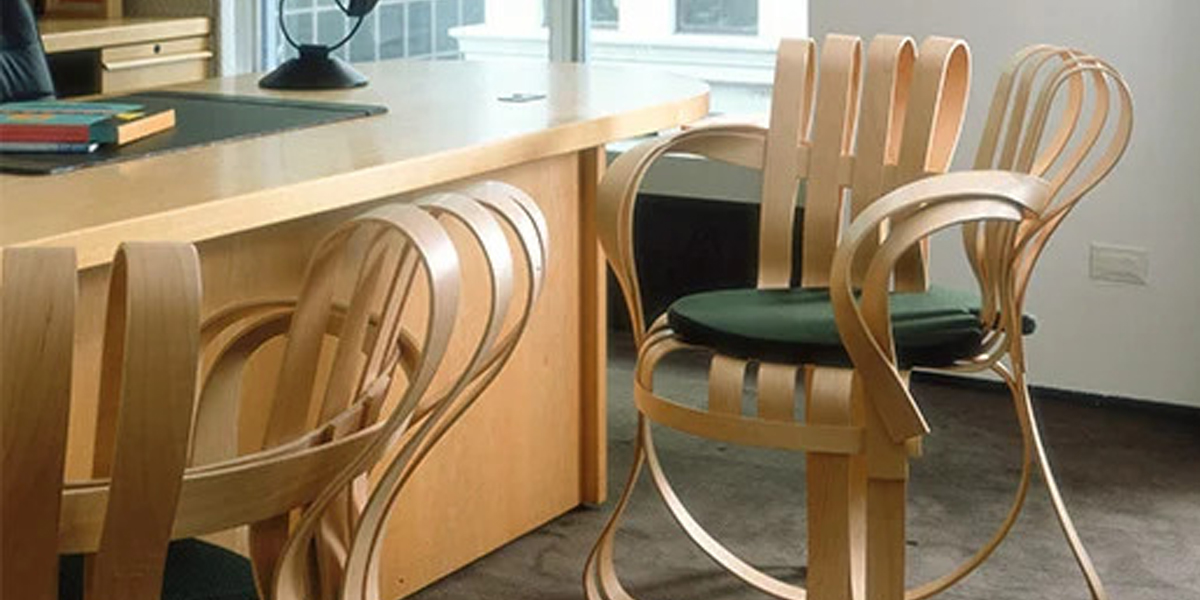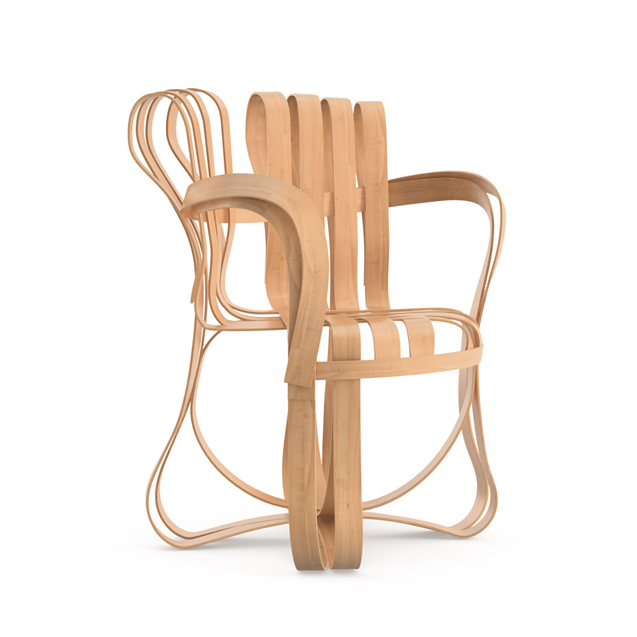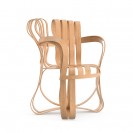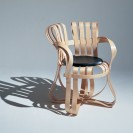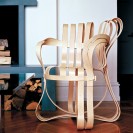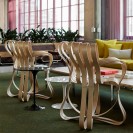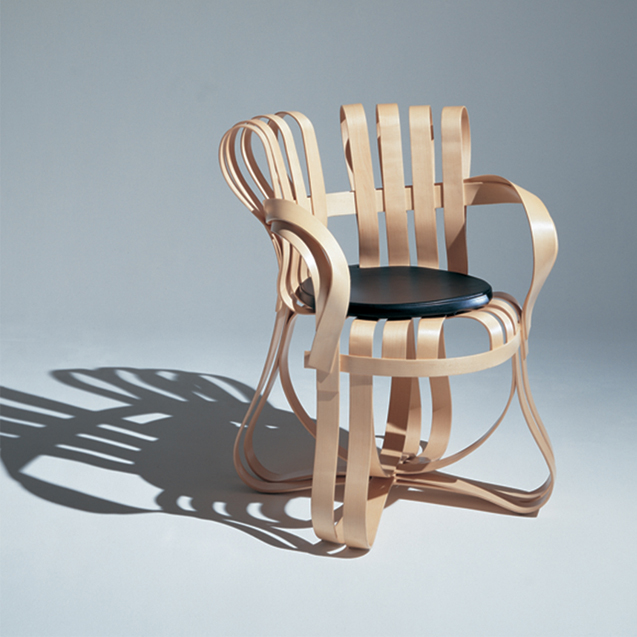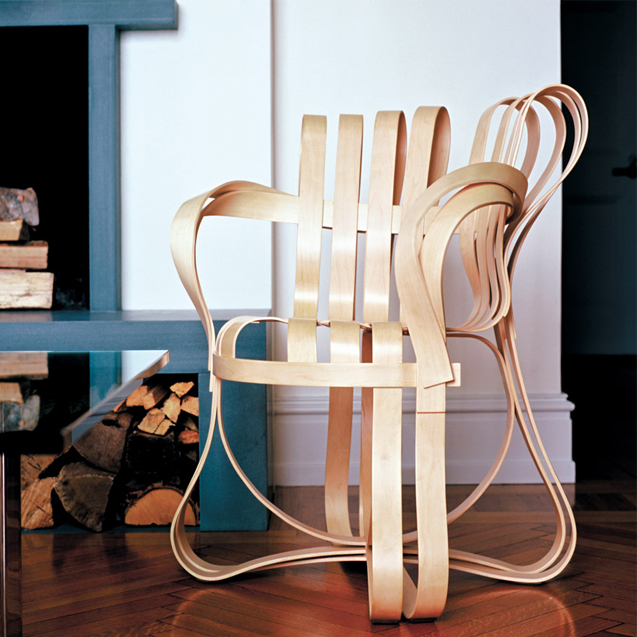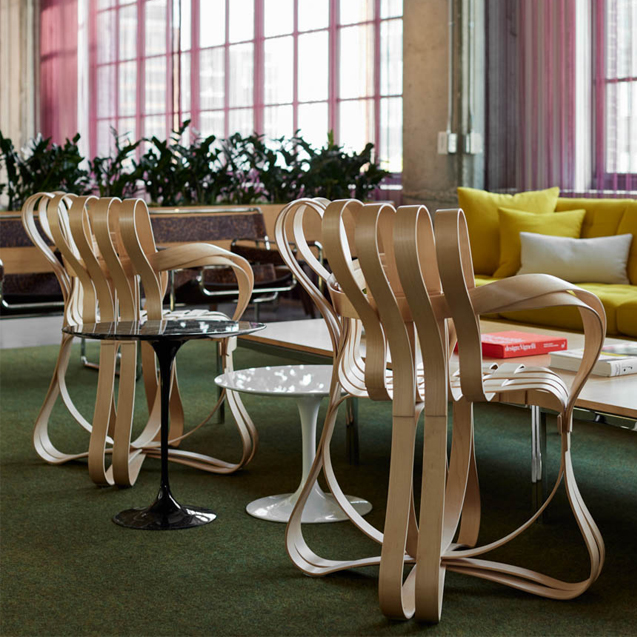Cross Check Chair
Inspired by the surprising strength of the apple crates he played on as a child, Frank Gehry created his thoroughly original collection of bentwood furniture. The ribbon-like designs transcend the conventions of style by exploring, as the great modernists did, the essential challenge of deriving form from function.
Neither party knew what lay ahead when Frank Gehry came to Knoll in 1989 with an idea for a new generation of bentwood furniture inspired by the simple bushel basket. Despite the uncertainty, a studio was set up and, fueled by mutual optimism, the investigation began.
“Everything I’ve always done has been a reaction against the usual expectations of the furniture market. I wanted the chair to come out of my own work, the shapes of my buildings… What the Knoll people first said to me was, ‘It probably won’t work, but maybe it will. You’ve been thinking about it. Something will come of it.’ All bentwood furniture until now has relied on a thick and heavy main structure and then an intermediary structure for the seating. The difference in my chairs is that structure and the seat are formed of the same incredibly lightweight slender wood strips, which serve both functions. What makes this all work and gives it extraordinary strength is the interwoven, basket-like character of the design… It really is possible to make bentwood furniture pliable, and springy and light.”*
After three years of experimentation and exploration, the collection was debuted in the Frank Gehry: New Furniture Prototypes show at The Museum of Modern Art in New York.
| About Designer | |
|---|---|
Frank Gehry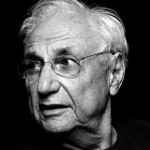 |
Frank Gehry, born 1929 in Toronto, Canada, earned a degree in architecture from the University of Southern California before studying urban planning at Harvard Universitys Graduate School of Design. In 1962 he founded the architectural firm Frank Gehry & Associates in Los Angeles. He designed the cardboard furniture series Easy Edges between 1969-72. Over the years he has taught at several universities, including Harvard and Yale, where he served as Charlotte-Davenport-Professorship of Architecture (1982, 1985, 1987-89) and where he still teaches. |
